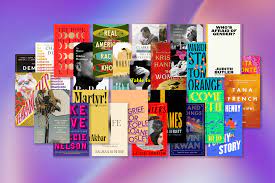Buchrezension: Best-Ager-Marketing

In a world where youth is often celebrated, marketing strategies tend to focus predominantly on winning over younger demographics. However, there’s a powerful and growing segment of the consumer market often overlooked: the ‘Best Agers,’ also known as the ‘silver generation.’ This group consists of individuals typically in their 50s, 60s, and beyond who are not only active and health-conscious but also possess substantial disposable incomes.
Best-Ager-Marketing recognizes the potential within this demographic and seeks to cater specifically to their needs, interests, and lifestyle choices. Unlike traditional marketing approaches that might marginalize older adults by portraying them as tech-averse or out of touch, Best-Ager-Marketing understands that today’s mature consumers are quite the opposite; they are increasingly tech-savvy, travel more than any other age group, and are looking for products and services that promote quality of life and longevity.
One of the key elements in effectively targeting best agers is understanding their values. They tend to prioritize authenticity, quality, comfort, and service. They appreciate clear communication, reliable information, and straightforward messaging without patronizing tones that some campaigns directed towards seniors might have used in the past.
Brands adapting to Best-Ager-Marketing also embrace inclusive advertising – showcasing older individuals who are active, engaged with life, and connected with modern trends. This not only appeals directly to the best ager demographic but also combats ageist stereotypes, which is a significant step toward more progressive marketing ethics.
Additionally, product innovation plays a critical role in this niche market. Products need to be not just age-appropriate but also aspirational. From ergonomic designs to cutting-edge health products or travel packages tailored for older adventurers, there’s an increasing demand for offerings that speak directly to the advanced age-group’s desires without compromising on esthetics or functionality.
Another crucial component is digital presence. With high internet usage rates among the silver generation gradually increasing, social media platforms like Facebook have become hotspots for businesses looking to engage with older adults. However, it’s not just about being online; it’s about creating content that resonates with their lives and experiences.
In conclusion, Best-Ager-Marketing isn’t just a trend; it’s a necessary adaptation for businesses looking to stay relevant in an aging society. By understanding and respecting this demographic’s unique characteristics – from their media consumption habits to their passion for active living – companies can craft compelling campaigns that truly resonate with one of the market’s most vital segments.”






